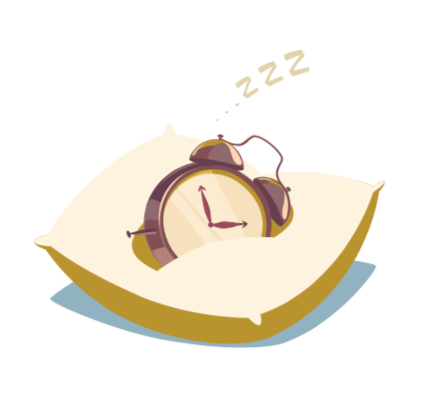Advice Unleashed (December 2017)
Tips and insight from business, financial and practice management experts.

Client expectations are often overlooked in end-of-life care,” says Sandra Grossman, PhD, owner of PetLoss Partners and Compassionate Practice Veterinary Consulting, “yet they are a big component of what drives client satisfaction and ultimately the practice’s client retention level.” One of the most surprising findings from her recent survey study on end-of-life care and pet loss was how important compassion is to pet owners at that time in their pet’s life. “Seventy-six percent of the clients surveyed said compassion from the veterinary team is just as important as the curing component in end-of-life care,” she says.
The survey results also showed that the area most in need of improvement is follow-up from the veterinary practice after a pet passes. “Eighty-seven percent of respondents said they received no pet loss support following euthanasia, such as grief counselor names or pet loss brochures, yet 83 percent said it was very important that they do get some type of pet loss support from the practice,” Dr. Grossman notes.

Rebecca Tudor, DVM, DACVS, owner of Tarheel Veterinary Surgical Specialists in Louisburg, North Carolina, uses the DiSC behavior profile assessment when hiring and onboarding new employees — “and really on a daily basis.” According to DiSC, there are four basic behavior styles that offer a framework for how to interact with one another:
D — dominant, direct, demanding, decisive, determined, doer
i — influential, inspiring, inducing, interactive, impressive
S — steady, supportive, stable, sensitive
C — compliant, cautious, calculating, careful, competent
All people will have some level of each of those characteristics making up their DiSC profile, says Dr. Tudor. “We all know and interact with people with whom we instantly connect, and we also have people in our lives who are more challenging to interact with, but we have to learn to work with a variety of people. DiSC helps you understand better who you are, what makes you tick and what makes you work well,” she says. “Understanding this about yourself and your coworkers allows you as a team to work more smoothly, to have less conflict and to be on the same page — all of which will make you perform better and more efficiently.”

Shift work is difficult for many veterinary care providers. Marie Holowaychuk, DVM, DACVECC, critical care specialist and veterinary wellness advocate for Critical Care Vet Consulting, offers some advice for those working odd hours.
“Simply staying awake during a night shift can be difficult, and caffeine can be a big help — two to four cups of coffee per shift for most people. Of course, we want to be able to sleep after our shift, so we don’t want to consume caffeine within six hours of going to bed,” she says. “Exposure to light is also helpful, such as with an artificial UV lamp or even the light from a computer monitor. Also, having the opportunity for a brief nap, usually between 1 a.m. and 4 a.m., to recharge, restore and rejuvenate yourself for the remainder of your shift can be tremendously effective.”
Dr. Holowaychuk “can’t stress enough” how important sleep hygiene is for everyone, but especially for those on shift work. “We really want to maintain healthy habits,” she says, “so set yourself up for a good night’s sleep. That means exercising before your shift, hydrating during your shift, avoiding alcohol after your shift and not using electronics within an hour of going to sleep,” she advises. “Finally, your bedroom should be your sleep sanctuary — a cozy bed, a comfortable temperature and quiet darkness will set you up for a good night’s sleep.”
After the Interview
Sheila Grosdidier, SCP, consultant and partner at Veterinary Management Consultation Inc. in Evergreen, Colorado, says there are three things interviewers should ask themselves after they interview a potential employee:
- “Were the questions I asked accurate compared with the candidate’s resume?
- Did I portray the job appropriately by providing an up-to-date job description and discussing my expectations for the role?
- Does this person fit with our practice culture? Remember, it’s not always about talent; sometimes the fit is just as important.”
Building a Culture of Trust
“A culture of trust means that employees feel like information is readily shared with them,” says Robin Brogdon, MA, owner and president of BluePrints Veterinary Marketing Group in Huntington Beach, California. “There are not a lot of secrets.”
She is not talking about sharing things that should remain confidential, like salaries. “But a culture of trust breeds openness, where people aren’t afraid to try new things, to talk to leadership about ideas and problems,” she notes. “It’s about free-flowing communication with some transparency that’s written into the culture of the practice. That’s the best way to inspire teamwork, collaboration and loyalty because team members feel that they’re being listened to, that they’re being heard and that their opinions and ideas matter.”

One of the key habits of successful job seekers is to always be prepared for opportunities that may present themselves, says Gary Vroegindewey, DVM, MSS, DACVPM, director of One Health at Lincoln Memorial University. “This means that you carry business cards, your resume is up-to-date and your elevator speech is prepared.” He also notes that unless you speak up and say what you want in your career, then it is going to be very difficult to achieve what you are seeking. When you go to a conference or other places where an opportunity might present itself, somebody there may be able to help you advance your career, but you’ll never know it unless you network.
A large percentage of jobs are acquired through networking, he says, particularly in the corporate arena. “When you let people know what you want, the odds are good that someone will reach out to you,” he says. “You’re much better off sending your resume to a company through a connection you have rather than sending it in blind.”

Veterinary and human medicine are very similar, says Steven Marks, BVSc, MS, MRCVS, DACVIM, associate dean and director of medical services at North Carolina State University College of Veterinary Medicine. “We take some lessons from them; I think they take some lessons from us,” he says. “Both of us, sometimes, on some days, can learn how not to teach students and how not to treat patients, so errors are also valuable.”
The biggest difference between human medicine and veterinary medicine, he says, is the end result after four years of postgraduate schooling. “At the end of four years of veterinary school, we produce a product that is functional. They are clinicians, and they’re ready to go,” he says. “A relatively small percentage pursue internships and residencies. On the other hand, medical schools don’t really produce a functional product at the end of four years. That is not meant to be disrespectful, but [medical doctors] are required to do further training. [In veterinary schools,] we’re under the gun to produce a product in a pretty short period of time.”
